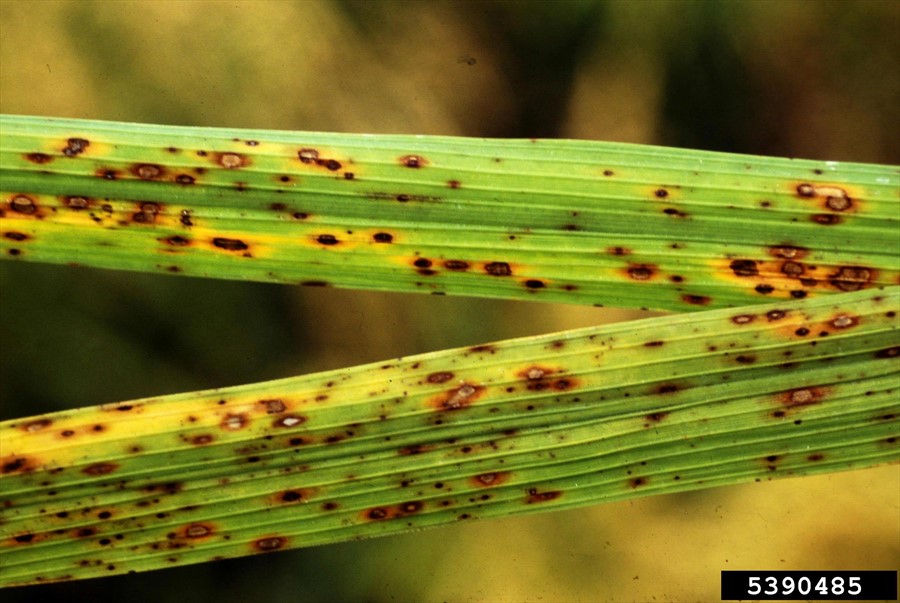Brown Spot Disease of Rice

Disease Overview :
Causal Organism: Bipolaris oryzae (fungus)
Affecting Stage: Seedling to milky grain stage (affects leaves, leaf sheath, grains)
Symptoms: Dark brown/purplish spots, yellowing, premature drying
Symptoms :
Leaf Symptoms –
- Small, round to oval dark brown or purplish spots with grey or tan centers on the leaves.
- As the disease progresses, spots become larger, typically 1-5 mm diameter, and may coalesce to form large patches.
- Severe infection leads to yellowing of leaves premature drying.
Grain Symptoms:
- Brown/black spots on the husk of developing grains.
- Poor grain filling, resulting in chaffy or discolored grains.
Seedling Symptoms:
- Narrow brown lesions
- Stunted growth, seedling blight
Favorable Conditions :
- High humidity & temperatures between 25-30°C.
- Nutrient-deficient soils (specially potassium and nitrogen)
- Drought stress, improper water management
- Dense planting, poor drainage
Control Measures :
Cultural Control –
- Disease-resistant varieties (IR-36, IR-64)
- Balanced fertilization (N, K, P)
- Good water management
- Seed treatment with fungicides
- Crop rotation, remove infected debris
Organic Control –
- Trichoderma harzianum (biocontrol agent)
- Neem cake, compost application
- Neem oil, plant-based extracts (preventive)
Chemical Control –
- Mancozeb 75% WP (Dithane M-45)
- Carbendazim 50% WP (Bavistin)
- Tricyclazole 75% WP (Beam)
- Propiconazole 25% EC (Tilt)
Effective Management
By implementing these strategies, farmers can effectively ensure good grain quality, enhance crop resilience, reduce disease severity and prevent yield losses.






